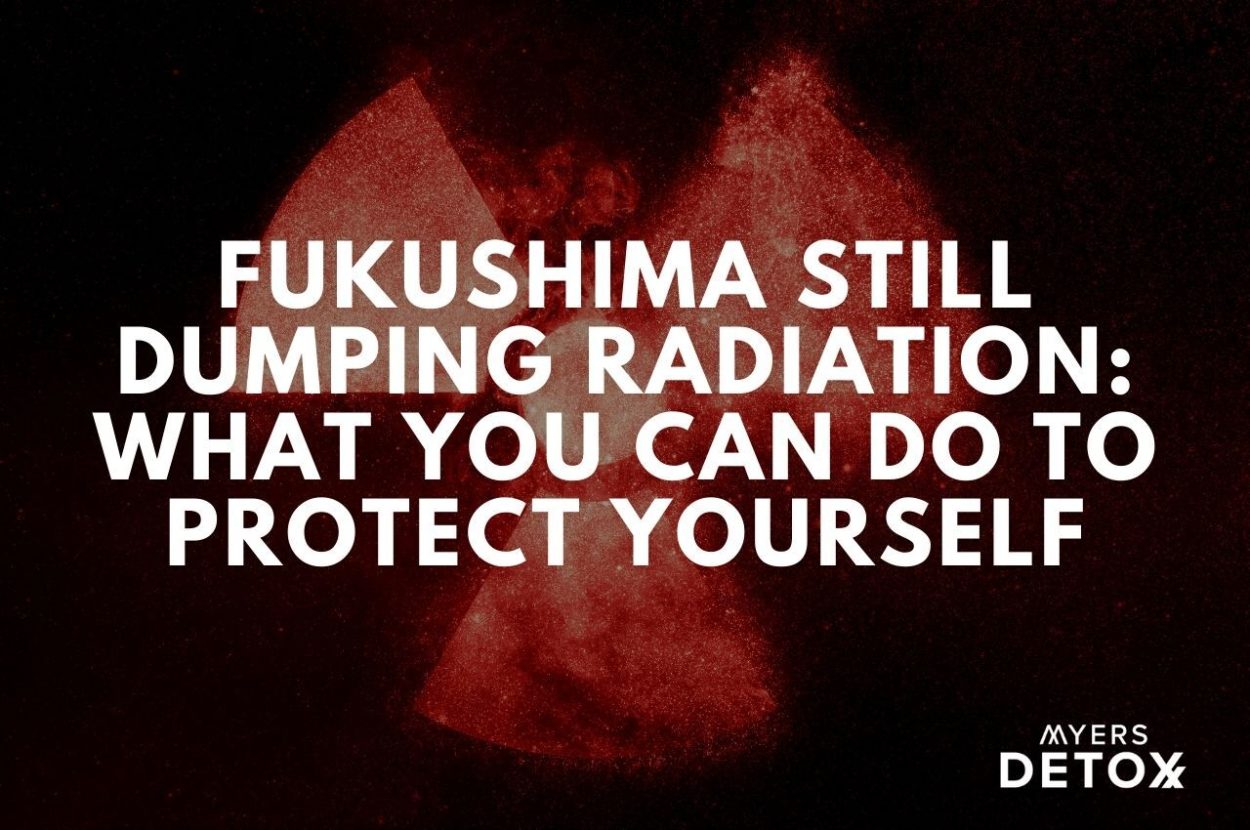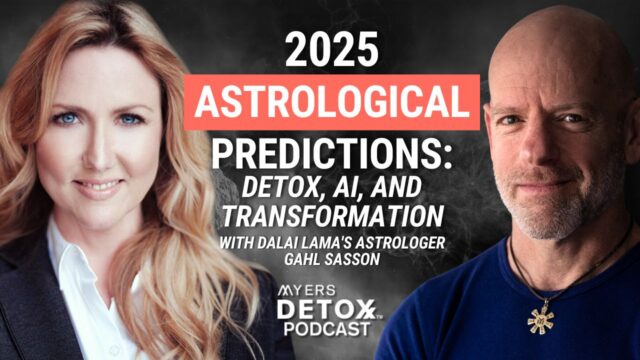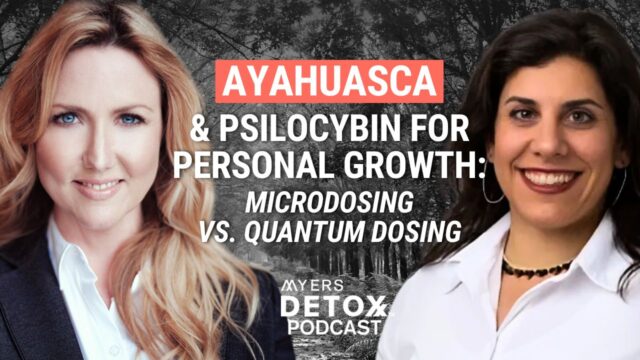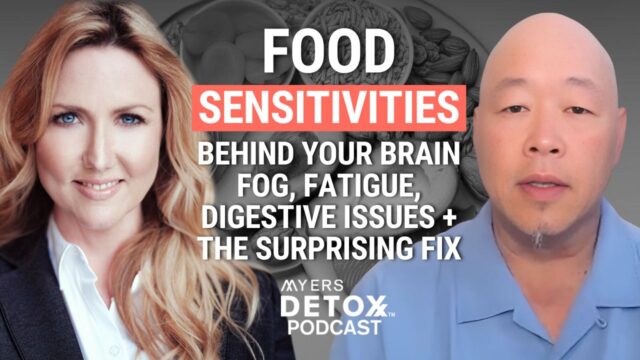Although the Fukushima nuclear accident in Japan happened nearly ten years ago, the dangerous fallout still continues to this day. You need to learn how this is affecting your health, what toxins this is unleashing into the environment, and how to deal with them.
The word “Fukushima” carries with it a lot of weight, sadness, and confusion. The tragedy that occurred in this city in Japan is still met with an underlying current of fear and trepidation. The terrible health toll left in its wake will continue to unfold over the coming years.
Fukushima was one of the 15 largest nuclear power plants in the world, and it’s destruction left a devastating level of nuclear pollution in its wake. With no way to control it, the radioactive pollution dumping thousands of gallons of radioactive waste into the sea continues to this day.
The government in Japan jumped into action to try to contain the nuclear fallout and waste, but concerns loom about how to handle the aftermath of the Fukushima nuclear plant incident[1][2]. Even after ten years no one has been able to figure out how to stop the nuclear pollution.
In this article, you’ll learn:
- How the Fukushima accident is still impacting us today
- The dangers of radioactive pollution
- How a toxic metal called cesium is of the greatest concern
- What you can do to mitigate the harm to your health caused by this nuclear fallout
What The Fukushima Accident Means Today
In March 2011, a major earthquake hit Japan and caused a 15-meter tsunami to disable three nuclear reactors’ power supply and cooling capacities in Fukushima. This incident released radioactive compounds into the communities and environment in and around Fukushima, instigating a mass evacuation.
With the power supply loss, the reactors quickly began to melt, with all three cores largely melting within the first three days. To combat the heating of the plants, water was brought in to stabilize the reactors.
Over the years, it’s estimated that 1.23 million metric tons of water have been pumped into the plant to maintain its core temperature. Once used, this highly radioactive water then goes into storage at the plant.
The issue that Fukushima is facing today is that the storage capacity for this nuclear water is running out.
The solution?
The Japanese government is considering dumping over one million tons of this highly dangerous and toxic water back into the ocean. While environmental groups are up in arms, there seems to be little regard for the radioactive isotopes that are contained in the Fukushima nuclear plant water, such as tritium, carbon-14, and highly dangerous cesium[3]. They are likely to move ahead with their plan soon to dump the nuclear waste.
What Is Radioactive Cesium?
Cesium is a naturally occurring element found in rocks, soil, and dust in low concentrations. Natural cesium is present in the environment — but only in its stable form.
On the other hand, radioactive cesium is produced by nuclear plants or when nuclear weapons are exploded. Radioactive cesium is very unstable but can eventually change into a more stable form by giving off radiation as it decays. This makes it a very serious health hazard.
Radioactive cesium can also be released into the environment during the normal operation of nuclear plants, or accidents involving nuclear-powered satellites or submarines.
Cesium can travel long distances in the air before being brought back down to earth. Therefore, if you think that just because we live thousands of miles from Japan that we are safe, this simply is not so[4].
Cesium contamination continues to be an issue in Fukushima ten years after the initial incident. Research shows that agriculture has suffered tremendously due to the pollution in the soil around the area of the accident. Livestock farming has suffered as well, and the soils in large areas of eastern and northeastern Japan are heavily contaminated rendering them unavailable for crop farming[5].
Devastatingly, livestock animals that were within the radiation zone were contaminated with radioactive compounds, and authorities instructed farmers to either euthanize or abandon their animals as they evacuated the area. This left thousands of cows and pigs to die of starvation and disease[17][18].
Despite their efforts to contain and decontaminate the natural world around the accident, the radioactive compounds continue to seep deeper into the soil and spread. In fact, mushrooms harvested 300 kilometers from the accident still held high levels of radioactive materials four years after the initial fallout[10].
Radioactive Cesium Exposure
If you come into contact with radioactive cesium, either through breathing, eating, drinking, or even just being in close proximity to it, the radiation can penetrate your body and cause direct damage to your cells.
You may also experience acute radiation syndrome, which may lead to nausea, vomiting, hair loss, diarrhea, bleeding, coma, increased cancer risk, and even death[4][6].
Furthermore, radioactive cesium can directly impact your body on a cellular level.
Signs of Cesium Exposure
Cesium is very similar in structure to the essential mineral potassium and has been shown to compete with potassium for transport throughout the body. Potassium plays a wide range of roles in your body, the most notable including maintaining cell function and intracellular fluid volume, as well as transmembrane electrochemical gradients[13].
When cesium replaces potassium it can create a buildup of cesium throughout your body, especially in muscle tissues. This often leads to symptoms of low potassium such as heart palpitations, muscle cramps, and fatigue[14][15][16].
Cesium can also disrupt the function of a crucial enzyme involved in energy production, creatine phosphokinase (CPK). CPK supports your mitochondrial function by assisting in the regulation of energy within your cells. When this pathway is disrupted, your mitochondria can no longer produce energy optimally which results in physical fatigue[19].
Other symptoms of cesium exposure include[4]:
- Nausea
- Diarrhea
- Vomiting
- Headache
- Decreased appetite
- Cardiac arrhythmias
- Seizures
How Are People Typically Exposed?
People are typically exposed to cesium by drinking, breathing, or eating it. It can also be absorbed through contact with the skin.
Cesium can be released from industrial plants (like that in Fukushima) or from a container like a drum. From here, it can seep into the environment, and if it is radioactive, you can be exposed to it through radiation.
In the case of the Fukushima water dilemma, the primary concern is that once this radioactive compound enters the ocean, it can be absorbed by phytoplankton, zooplankton, kelp, and other marine life. From here it can then be transmitted up the food chain, to fish, marine mammals, and eventually humans[11].
While it’s unlikely that the contamination will reach the pacific ocean, the US imports around 80% of their fish, and a large portion of the imports come from Asian countries. Research shows that three years after the Fukushima accident, significant amounts of cesium could still be detected in fish off the coast of Japan. With the unprecedented amount of radioactive water that Japan plans on dumping into the ocean, the question of whether this could impact US imports looms[20][21].
Some research also shows that radioactive contamination can travel through the atmosphere in ‘clouds of radiation” migrating over the entire world. This could potentially create a threat to the air that you breathe should the radioactive water from fukushima condense over the ocean[12].
What You Can Do To Support Your Health
Although it may sound like a hopeless situation, there are ways to support your health in the face of the potential radioactive isotopes that threaten our oceans. Fukushima isn’t the only nuclear disaster. There has been Chernobyl in 1986, nuclear testing and nuclear waste storage that can and do continue to leak heavy metals and radioactive substances into our environment.
Unfortunately, you can’t do much about what’s going into the water in which you eat, drink, and bathe. What you can do, however, is introduce targeted nutrients into your system that support your body’s natural ability to excrete harmful compounds.
And it is always better to take steps now to protect your health before possible exposure.
Regarding cesium specifically, research shows that silica acts as a powerful adsorbent[7]. An adsorbent is a substance that allows other compounds to adhere to its surface. As an adsorbent, silica acts like a sponge to different contaminants in your body — adhering to them and supporting the body’s natural response to them.
Silica has even been proposed as part of a complex that could decontaminate cesium-polluted water[8].
This is exactly why I chose to add silica to the formulation of my Ageless AF. Ageless AF is an anti-aging supplement that not only supports your hair, skin, and nails, but also provides the nutrients your body needs to support your health, detox from everyday living, and help you maintain a clean lifestyle.*
Takeaway
Natural disasters occur all the time, but the fallout is often unpredictable and can last for decades. In the case of Fukushima, this nightmare is ongoing.
The threat from this nuclear disaster still looms heavy today, ten years later, due to the ineffective measures that were put in place to contain the radioactive isotopes found in these power plants.
While we can only hope that the Japanese government finds another way to dispose of their contaminated water, the outlook is not great for our ocean. Therefore, it’s up to you to protect yourself and your family from the potential harm that could result from the pending water disposal.
And remember that the best course of action is always to take preemptive steps to help your body maintain good health before any possible exposure.
**These statements have not been reviewed by the FDA. Ageless AF is a dietary supplement and is not intended to cure, treat, or prevent any disease. Please speak to your doctor before starting any supplement regimen.









